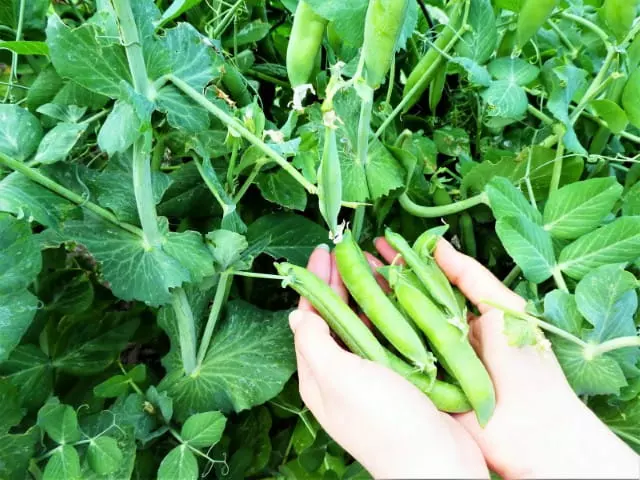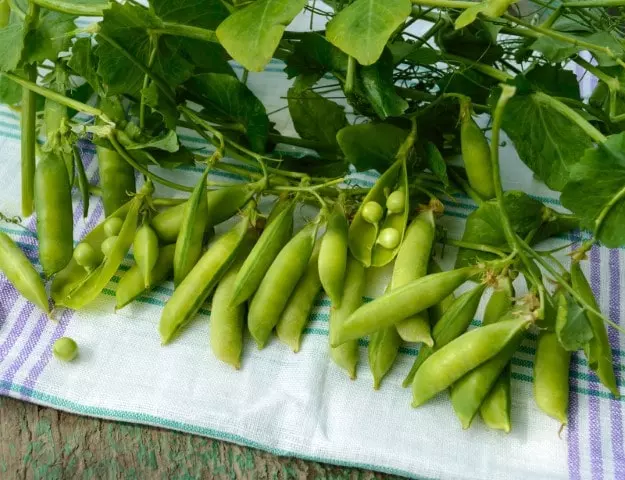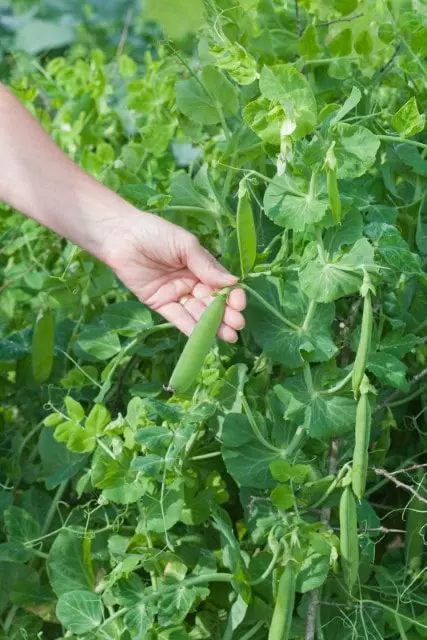In this article, we will explain how and when to harvest peas. If you planted peas in the fall, you will be able to harvest peas in the late winter or early spring. Read on to learn everything you need to know for a successful pea harvest.
Peas can be planted almost all year round, except in July and August, which are very hot months (it will also depend on where you live).
A very important thing to note about peas is that growing peas brings a lot of nitrogen to the soil, which will help the next crops.
Table of Contents
When to Harvest Peas
When to Harvest Peas? The vast majority of pea varieties are harvested after 60 to 75 days after planting. There are other varieties of peas that take 40 to 50 days longer to be ready to be harvested.
To know if the peas are ready to be harvested, you should check the pea plant regularly, especially after 50 days after planting. Touch the pods of the peas and see if the pea bulbs have formed to know if they are ready to be harvested.
Another way to know when to harvest peas is after the pea plant flowers. Generally, after 2 to 3 weeks of the pea plant flowers, peas can be harvested.
The first pea pods to develop are those on the lower part of the plant, and then they develop in stages. You will be able to harvest peas in a staggered manner for quite some time.
I recommend harvesting the pea pods every two days, it is also important to harvest the pods regularly to encourage the pea plant to produce more.

How to Harvest Peas
How to Harvest Peas? Peas can be harvested green for fresh consumption (60-75 days after sowing, depending on the texture of the grain) or otherwise when the plants have finished their vegetative cycle (general yellowing, the pod shells are easily shelled) for dry grain.
The best time to harvest peas is during the morning after the dew dries. Harvest peas by cutting them with a sharp knife or scissors, rather than pulling them from the plant to avoid damaging the plant. By not damaging the plant, you will allow future pea pods to continue to develop.
Harvest pods every two days for better texture and good flavor. Harvest peas regularly to encourage the plant to keep producing and also produce more peas.
Some species of peas such as snow peas are tastier when harvested a little earlier. We recommend harvesting peas the same day you plan to eat them to be eaten fresh. You should also harvest the peas and refrigerate them so that they do not lose their flavor.

Varieties Of Peas
There are many varieties of peas, as mentioned above, some take longer and some take less time to harvest. Here are some varieties of peas that you should grow in your garden:
Snow Peas: They are very common in Chinese food, you should also eat the pods of this type of peas.
Green Arrow: Variety that does not require a trellis to grow. Very tolerant to mildew and fusarium.
Sugar Snap Pea: A variety of pea that can be eaten in its entire pod.
Progress No. 9 Pea: Long podded pea variety very resistant to pests.
Thomas Laxton Peas: This variety of peas has high sugar content. The pod of this variety of peas is not consumed. You should be able to use the pods for your compost.
Little Marvel Peas: This pea variety grows no more than 15″ (38 cm) tall and produces many pods.
As you can see, there are many varieties of peas to grow in the garden. Each species has its advantages and disadvantages, such as taking longer or less time to grow or better withstand some kind of pest.
Use the hulls and unused leaves of peas for your compost. In this article, we explain how to make a worm composting bin. The soil where the peas were grown will be rich in nitrogen, which will be excellent for your next crop.


